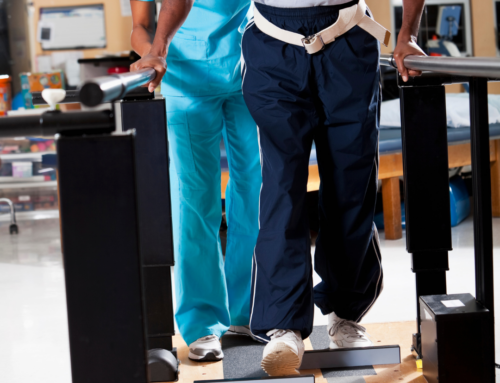Balance therapy, otherwise known as vestibular rehabilitation, is for people suffering with imbalance, vertigo, or dizziness as these conditions can affect a person’s daily life. Imagine you felt like you were going to collapse or could not clearly see something to aid you from falling over every time you got up to do something. These conditions can ruin people’s lives and make them afraid to get up and get out. Vestibular (balance) disorders can create a sedentary lifestyle and can bring along side effects such as depression and anxiety, but fortunately there are rehabilitation methods that will improve balance and help a person get back to their daily activities. Contact us for an expert Vestibular Therapist near Farmingdale today!
How Can Our Vestibular Therapist near Farmingdale Help You?
A vestibular disorder, depending on how severe, can make you want to stay in one place and not move so much in order to prevent pain or imbalance. Dizziness and nausea is something nobody wants to constantly experience as it can increase joint stiffness and reduce your muscle strength, stamina, and flexibility from sitting around so much. It is strongly advised to go out and seek treatment instead of withering away to nothing in your own home.
Treatment is available in vestibular rehabilitation (VR) with our Vestibular Therapist near Farmingdale, and is aimed towards reducing dizziness and vertigo, treat gaze instability, and help with imbalance and falling. Patients will feel better over time and the brain will begin to use other senses, including “body senses” such as vision and somatosensory, to substitute for the deficient vestibular system. The treatment is exercise based and the programs are customized for the individual patient to help address their specific problems head on.
What Will My Visit Be Like?
An initial evaluation begins with a detailed history of the patient’s history of balance issues, such as symptoms and falls they might have had, and hearing and visual problems are also brought forward and eye movement is tested. Therapists will also ask you about your activity level, and how much you move in your daily life. Range of motion, posture, coordination and walking ability are also discussed to help determine treatment. Patients are relieved to hear about the personal attention to detail and are amazed that treatment is focused on the individual patient and not catered to the masses.
There are three principle methods of exercise used to treat balance issues:
- Habituation (treats symptoms of self-motion).
- Gaze stabilization (improve control of eye movement).
- Balance training (improve steadiness).
Treating Your Vestibular Conditions
The goal of habituation is to reduce dizziness through repeated exposure to specific movements. If the treatment is successful, the dizziness will decrease as the brain starts to learn to ignore abnormal signs it’s receiving from the inner ear. Gaze stabilization uses two exercises as treatment. The first exercise involves fixating on an object while moving your head repeated back, forth, up, and down for several minutes. The second exercise uses vision and somatosensation as substitutes for the damaged vestibular system. Target exercises and gaze shifting use sensory substitution to help increase gaze stability and are most helpful to the individual with little vestibular function left.
The last type of exercise is balance training and it improves steadiness by using exercises like visual and somatosensory cues, dual tasks (performing task while balancing), and stationary and dynamic movements. The exercises should be challenging for the patient but safe for them to perform as it will help them balance in standing, turning, bending, walking and reaching above their heads. In some cases, treatment can also be further performed to help with running, so people can gain some normalcy and exercise in their daily lives.
Balance therapy is a specific therapy for people with specific needs and it seems like there is a nice variety of treatments to help someone with their balance (vestibular) disorders. It is possible to get back into a daily routine that will help you leave your house without worrying about taking a spill down your front steps, and although it requires hard work and dedication, balance will increase slowly overtime. If you stick with the program, symptoms should diminish and you will hopefully feel whole again.
Vestibular Therapist near Farmingdale
Did you know that you have Direct Access to Physical Therapy? No referral is needed. We offer the best Physical Therapy on Long Island where you can get help from our trusted and expert Vestibular Therapist near Farmingdale. We have several locations on Long Island including Massapequa, Valley Stream, Wantagh and Lindenhurst. To start your Physical Therapy evaluation, call Advance Physical Therapy and The Physical Therapy Alliance at (516) 568-4444.









Leave A Comment